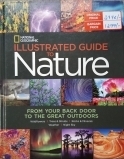
Studies conducted at the University of Kansas show the benefit of spending more time in nature. Testing the theory that “nature has specific restorative effects on the prefrontal cortex” - the part of the brain responsible for creativity and planning - the researchers gave a standardised problem - solving test to backpackers aged 18 to 60, before and after a four-day sojourn into the wilderness. Campers returning scored 50 percent higher.
Why? “Nature is a place where our mind can rest, relax and let down those threat responses,” says Ruth Ann Atchley, lead investigator. When we spend time in nature, Atchley, proposes, “we have resources left over - to be creative, to be imaginative, to problem-solve - that allow us to be better, happier people who engage in a more productive way with others.”
This richly illustrated volume is an excellent guide to the amazing views and vistas of North America’s natural world. It is designed to invite people, young and old, to step with greater pleasure into the out-of-doors. The purpose of the book is to educate and entertain.
The book presents five of the great realms of nature: World of wildflowers, trees and shrubs, rocks and minerals, the weather and the night sky. In each part, the book offers breath-taking images, identifying features and brief descriptions of each of the 781 species and phenomena selected by the experts in these fields of natural history.
Thus, the guide is a starting point from which every nature enthusiast will proceed to fuller, longer and more detailed topic-specific field guides.
We should remember that the more high-tech we become, the more nature we need and use such guides throughout our life to learn more about the wonders of nature and draw energy and inspiration from nature.
